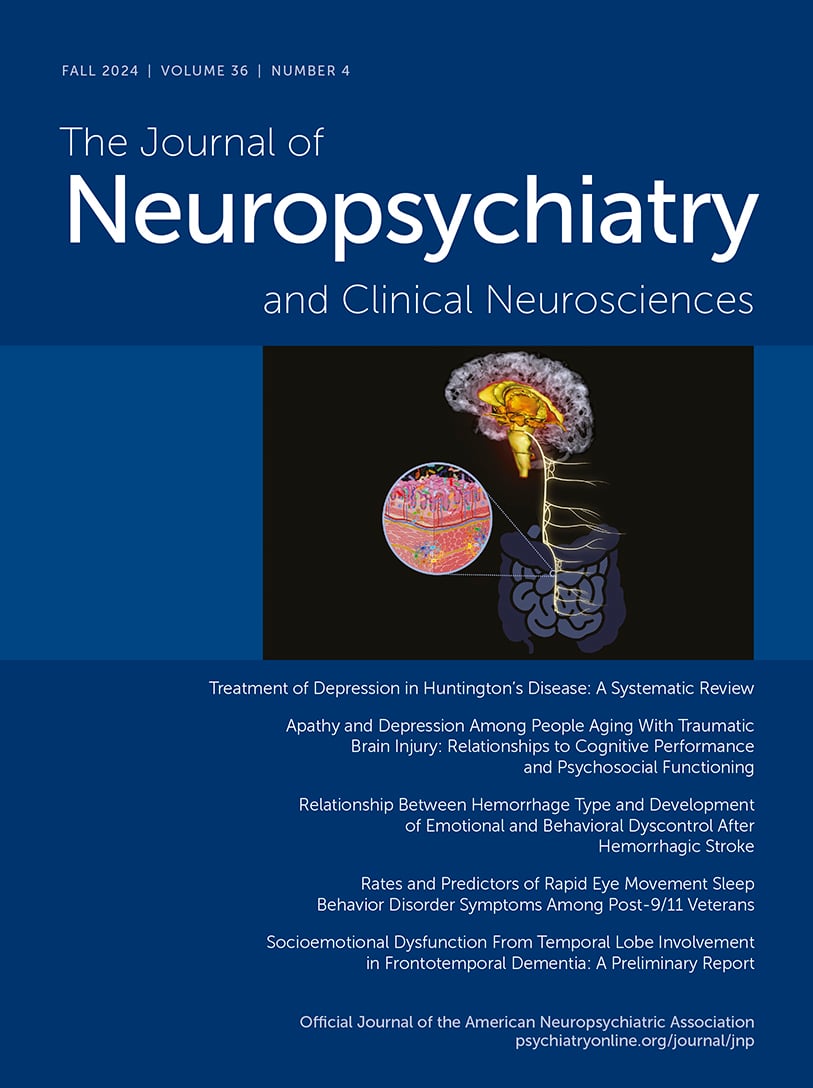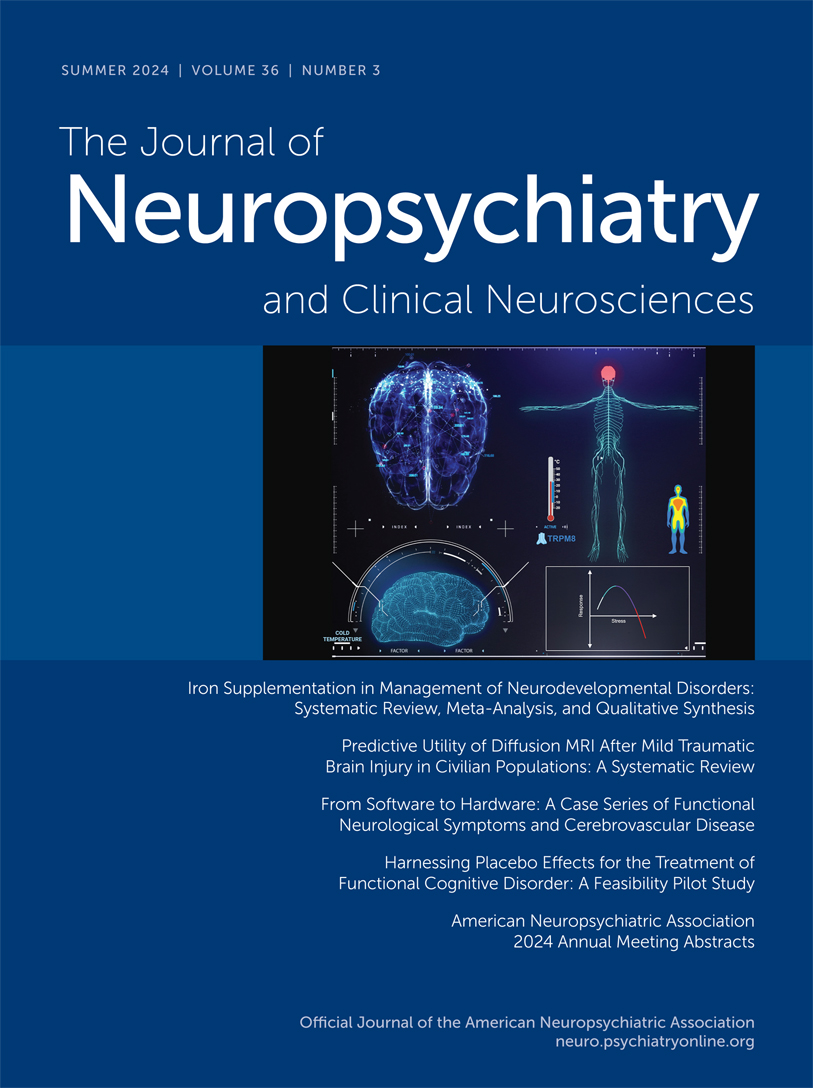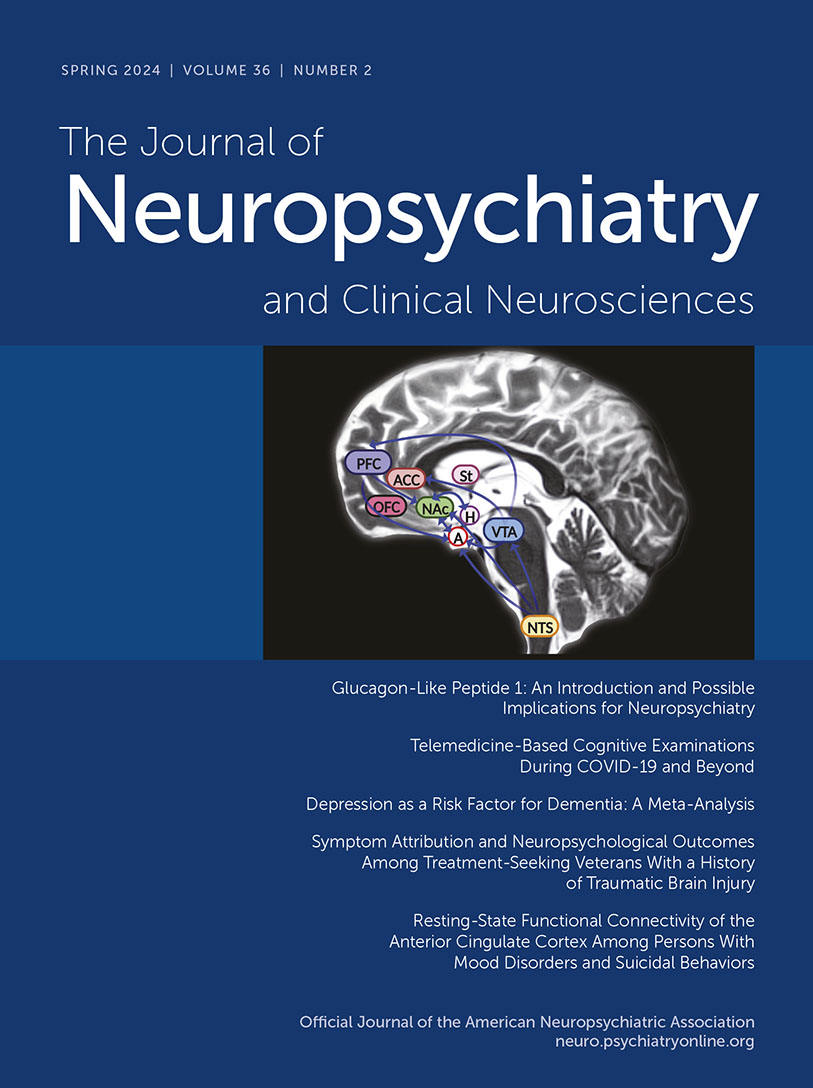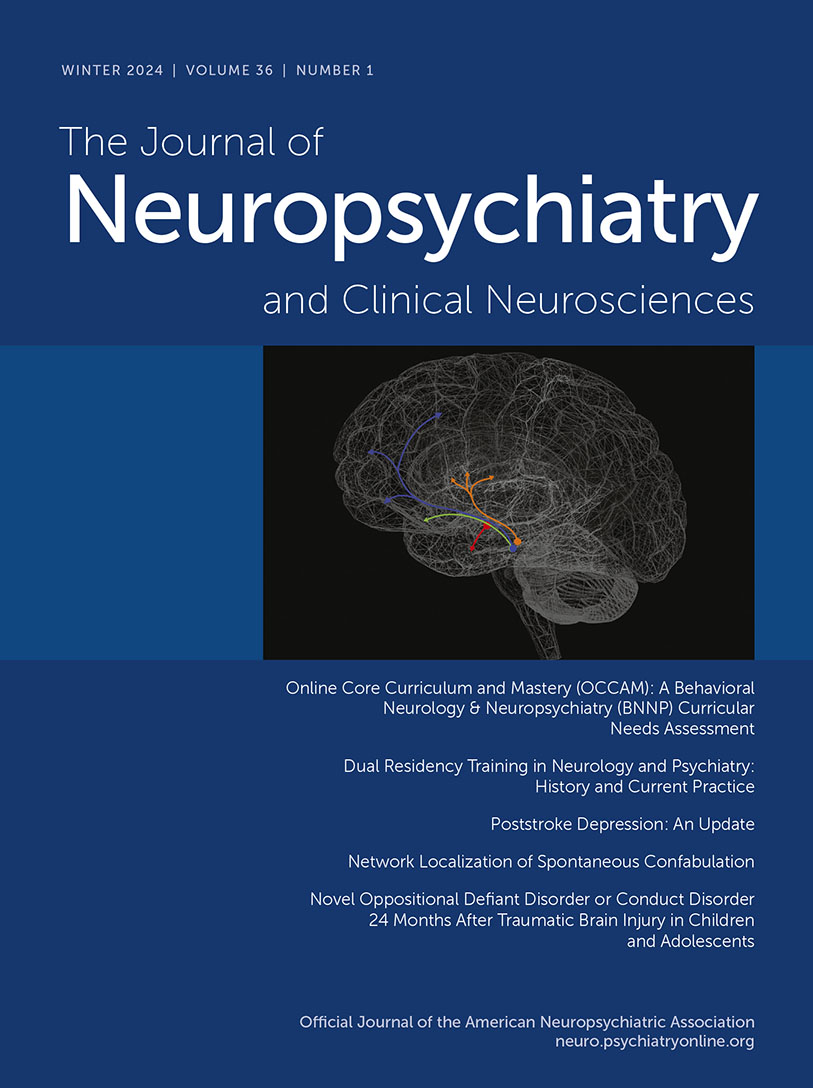The Journal of Neuropsychiatry and Clinical Neurosciences
- Volume 29
- Number 3
- July 2017
Windows to the Brain
Special Articles
Publication date: 27 February 2017
Pages195–205The C9orf72 mutation was identified as the most frequent genetic cause of frontotemporal dementia (FTD). In light of multiple reports of predominant psychiatric presentations of FTD secondary to C9orf72 mutation, the American Neuropsychiatric Association ...
https://doi.org/10.1176/appi.neuropsych.16090168Publication date: 14 February 2017
Pages206–224Although major depressive disorder (MDD) and posttraumatic stress disorder (PTSD) are prevalent after traumatic brain injury (TBI), little is known about which patients are at risk for developing them. The authors systematically reviewed the literature on ...
https://doi.org/10.1176/appi.neuropsych.16090165Publication date: 28 March 2017
Pages225–235Delusions are beliefs that remain fixed despite evidence that they are incorrect. Although the precise neural mechanism of delusional belief remains to be elucidated, there is a predominance of right-hemisphere lesions among patients with delusional ...
https://doi.org/10.1176/appi.neuropsych.16060118Regular Articles
Publication date: 25 January 2017
Pages236–247Drowsiness may be defined as the progressive loss of cortical processing efficiency that occurs with time passing while awake. This loss of cortical processing efficiency is reflected in focal changes to the electroencephalogram, including islands of ...
https://doi.org/10.1176/appi.neuropsych.16060120Publication date: 15 March 2017
Pages248–253The authors examined 28 dementia inpatients receiving treatment as usual. Beginning-to-end differences in neuropsychiatric symptoms and actigraphic sleep patterns were measured. Using a mixed-model, the authors regressed neuropsychiatric symptoms on ...
https://doi.org/10.1176/appi.neuropsych.16090166Publication date: 25 January 2017
Pages254–259This study randomly sampled post-9/11 military veterans and reports on causes, predictors, and frequency of traumatic brain injury (TBI) (N=1,388). A total of 17.3% met criteria for TBI during military service, with about one-half reporting multiple head ...
https://doi.org/10.1176/appi.neuropsych.16050100Publication date: 15 March 2017
Pages260–266Timely treatment of depression and behavioral dysfunction after moderate-to-severe traumatic brain injury (TBI) could improve health, function, and quality of life. The authors hypothesized that 6-month depression would be the stronger contributor to ...
https://doi.org/10.1176/appi.neuropsych.16100217Publication date: 25 January 2017
Pages267–274Patients with anti-N-methyl-D-aspartate receptor (NMDAR) encephalitis may remain undiagnosed and untreated with immunotherapy. To investigate specific features and responses to immunotherapy of atypical anti-NMDAR antibody positivity patients, the authors ...
https://doi.org/10.1176/appi.neuropsych.16050101Publication date: 27 February 2017
Pages275–283Serious mental illness (SMI) is disabling, and current interventions are ineffective for many. This exploratory study sought to demonstrate the feasibility of applying topological data analysis (TDA) to resting-state functional connectivity data obtained ...
https://doi.org/10.1176/appi.neuropsych.16090174Publication date: 28 March 2017
Pages284–288The misidentification of one’s own limb (LM) after right hemisphere stroke is a striking phenomenon that is incompletely understood. The authors prospectively studied the natural history and anatomy of LM in 36 patients with hyperacute right middle ...
https://doi.org/10.1176/appi.neuropsych.16090169Clinical and Research Reports
Publication date: 15 March 2017
Pages289–292The Clock-Drawing Test (CDT) is a brief, relatively time-efficient, easy to administer at bedside, and well-proven cognitive screening test that assesses a broad range of cognitive abilities in stroke, delirium, and dementia. However, challenges of ...
https://doi.org/10.1176/appi.neuropsych.16090163Case Reports
Abstracts
Correction
Past Issues
View Issues Archive
Vol. 36 | No. 4

Vol. 36 | No. 3

Vol. 36 | No. 2
